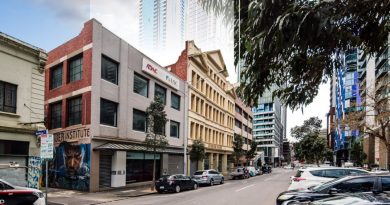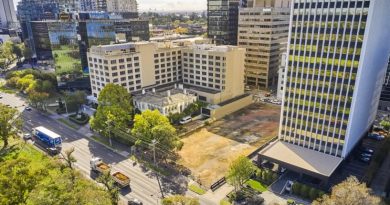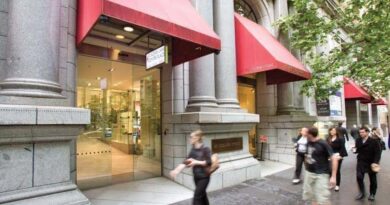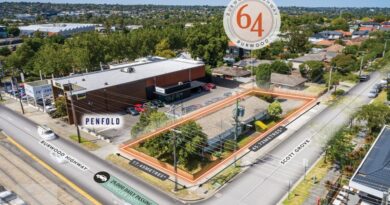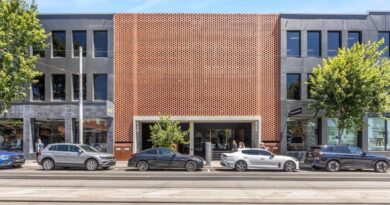LPT Sector Now a Riskier Deal
“It beats me,” Mr Hamilton told a group of journalists. “I don’t see why they (the US) are smarter than the rest of the world. The risks far outweigh the attraction.”
Fast forward four years, and his comments couldn’t be more pertinent.
The former darling of the Australian Listed Property Trust sector, Centro Properties Group – who’s security price peaked at $10.05 per unit in May this year, is fighting to avoid a fire sale of its lucrative national and international property portfolios, because it pushed into the US market too fast – and underestimated the amount of debt it took on.
At close of trade yesterday (18/12/2007), values for the group’s biggest fund the Centro Properties Group closed at 80.5 cents – 40.8 per cent lower than on Monday (17/12/2007), and 86 per cent lower than this time last week, when executives halted trading to give them time to refinance $1.3 billion of retiring debt.
“Centro properties Group is Australia’s largest manager of American property, and that’s no mean feat in today’s climate,” says The Intelligent Investor research director Greg Hoffman. “Australian funds are currently the largest foreign purchasers of US property, eclipsing the cashed-up Chinese and oil-rich shieks.”
Mr Hoffman says it is wrong to refer to the approximate $100 billion sector as simply “listed property trusts” anymore.
“Many of the modern incarnations (of the traditional LPT) are stapled securities – financial Frankensteins of companies and trusts lumbering away from traditional property ownership toward riskier activities,” says Mr Hoffman. “And these monsters are piling on huge slabs of debt, sending gearing levels through the roof.”
Put simply, a stapled security exists when there are two or more legally different instruments which are coupled together. They cannot be sold separately, and are treated as a single asset for capital gain tax purposes.
Centro is an example of a stapled security whereby a portion of the security value is attributed to the property asset, and another portion is attributed to Centro’s fund management business, which derives fees managing and leasing Centro’s shopping centres.
The arrangement often suits the fund management business, which can derive consultancy fees that are typically higher than those charged by major commercial real estate agencies, even if the asset has performed poorly.
“The whole sector has changed,” said Mr Hoffman. “Ten years ago a company like General Property Trust (Australia’s oldest property trust) were steady, stable conservative vehicles that paid their income year to year.”
“Over the past three or four years however, many traditional listed property trust vehicles have borrowed money and levered up,” he said. “A lot decided they wanted to be fund managers as well and have become stapled securities.”
Other traditional listed property vehicles like Stockland have decided to diversify by investing into the retirement village sector, or by establishing a residential development arm – concepts unheard of when the LPT sector rose to popularity in the late 1990s.
And so with rapid and disparate diversification of Australian property trusts, comes varying – and subjective – levels of risk.
A crash in the apartment market for example, may send shivers through the corridors of Stockland’s Sydney head office, which is boosting its residential development division and is stocking itself up with sites.
Most analysts anticipate the Centro Property Group meltdown will be the biggest casualty from the global credit crunch, which has been negatively affected by the US sub-prime mortgage crisis.
“Centro is not dealing with an operational issue, people are still spending at Centro shopping centres” says Mr Hoffman. “What you have is a serious financial problem because they’ve geared themselves up to highly”.
Property Investment Research director Mark Wist anticipates more turbulent times ahead for the sector.
“Obviously the credit crunch is the biggest issue facing investment vehicles at the moment,” he told BusinessDay. “What we may now see is the unwinding of recent yield compression that we’ve seen in the last few years.”
“The market has been used to the underlying value of property increasing one year to the next and this is reflected in dividends,” said Mr Wist. “That seems now to be at an end.”
Most LPTs have reported strong capital value growth of their assets, as well as rental growth. Strong surges in capital value growth, which have seen some CBD buildings sell for more than twice the price paid two years ago, may occur less frequently because of anxiety in the market.
This may prevent some LPTs expanding, because they don’t have the flexibility of using their existing assets, to fund more purchases and put themselves at higher risk.
“Reversing yield compression will exacerbate the gearing situation for many LPTs,” he said. “And when value decreases, the level of debt increases as a result.”
According to research from Jones Lang LaSalle, yields for A-grade Melbourne CBD office buildings peaked at between 7.25 per cent to 8.75 per cent at the start of 2003, falling rapidly each quarter to about 5.75 per cent to 6.5 per cent today.
The prices paid for shopping centres has also resulted in strong yield compression for that sector, falling from 6.75 per cent to 8.25 per cent at the start of 2003, to between 4.75 per cent to 7 per cent today.
Yields for all commercial property sectors in Australia are at record low levels, with many analysts waiting to see when they would steady. Some say the recent Centro Properties Group crisis has shaken the mania out of the market, and are expecting 2008 to be a much more conservative time for Australian commercial property sectors.
Others believe counter-cyclical investors will be there to swoop in, if and when a company falls to its knees. Mergers and takeovers, particularly for smaller funds, may also become a feature of the 2008 commercial property market.
“A major issue for Australian listed property trusts is the timing of rolling debt expiry,” says Mr Wist. “Many LPTs will have secured debt when it was particularly cheap. Therefore a reversion to a current rate may mean some cost to net earnings, and therefore distributions.”
“The sensible trusts will have made changes so their debt is not to be repaid in one hit,” says Mr Wist.
Yesterday, LPTs include Macquarie Countrywide, Macquarie DDR and the Aspen Group were quick to disassociate themselves from Centro Properties Group, confirming the amount of debt it had, was in check.
“Another thing to be watched is the relationship between Australian LPTs and international joint venture partners,” Mr Wist warns. “It’s important to make sure international joint venture partnerships remain appropriate and that relationships don’t dissolve as a consequence of negative ramifications of the current circumstances.”
Mr Wist says Australian commercial property markets are going through “ a rough patch” at the moment. “Sentiment will be damaged because traditionally the LPT sector has been a safe haven for investors for so long.”
BIS Shrapnel chief economist Frank Gelber is still upbeat about the strength of the listed property trust sector, and Australia’s major commercial property markets in general.
“The thing people are worried about now is availability of credit, so gearing is a major issue,” he told BusinessDay. “Trusts that have exposure to the US where people are worried about recession, or the UK where the market has been weakening, are perceived to be exposed.”
However he says the fundamentals of the core office, retail and industrial markets in Australia are still sound.
“I’ve often seen market gyrations and panics, but on the real estate side of the equation, things are still looking strong,” said Mr Gelber. “There’s nothing on the table at the moment to suggest the sector is going to implode, despite what is happening to Centro.”

